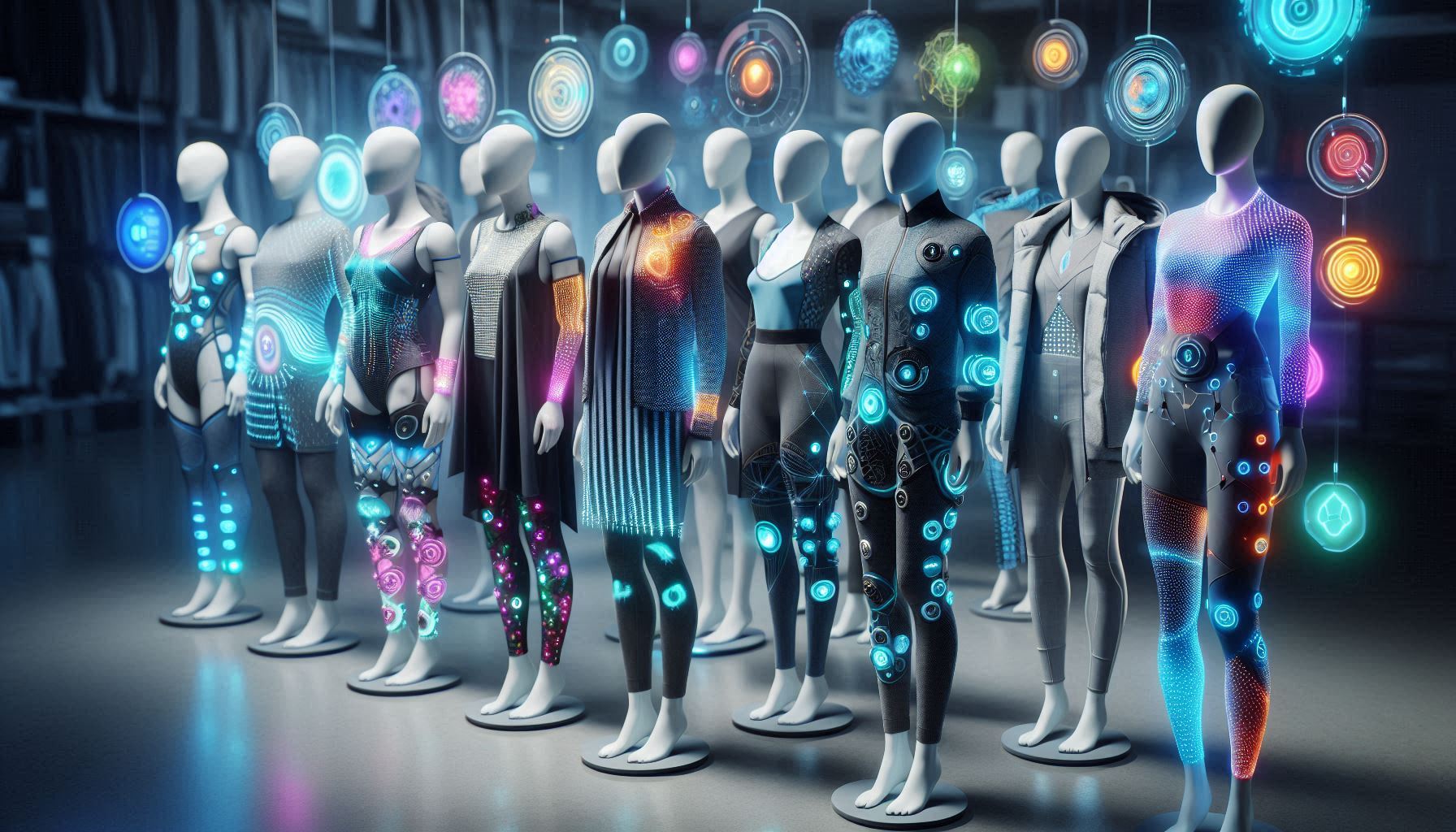Welcome to Vertevia.com. In this article titled What Are Smart Textiles? A Practical Guide For Health Bloggers, we shall be looking the innovative world of wearable smart textiles. These are now really taking off as a serious option for sports people or people who are just looking to monitor and track their overall health and activity. The smart textiles market is forecast to hit $5.56B by 2030. Let’s begin!
Introduction
The wearable health technology industry has evolved from step counters and basic heart rate monitors into an advanced ecosystem of connected devices that can track an impressive range of biometric and environmental data. At the forefront of this evolution is the growing field of smart textiles.
These are not gadgets you strap to your body, but fabrics that integrate sensors, conductive threads, and tiny electronics directly into the weave or knit. For the wearer, the technology becomes almost invisible, offering seamless and continuous health monitoring without any bulky equipment.
For health bloggers, smart textiles represent both a fascinating topic and an emerging trend that will shape the next decade of personal wellness technology. Understanding how they work, their potential benefits, and the challenges they face will help you inform your audience with accurate, insightful, and engaging content. Whether your readers are athletes, people managing chronic health conditions, or simply technology enthusiasts, smart textiles offer a glimpse into the future of wearable health solutions.
What Are Smart Textiles?
Smart textiles, sometimes referred to as e-textiles, are fabrics that combine traditional textile properties with integrated digital components such as sensors, conductive threads, or microcontrollers. Unlike standard clothing, these garments can sense changes in the body or environment, process the data, and often communicate it to other devices such as smartphones or cloud based health monitoring systems.
Smart textiles can be grouped into two broad categories:
- Passive smart textiles – These can detect stimuli from the environment or body, such as temperature, moisture, or movement, but they do not actively respond.
- Active smart textiles – These can detect and also respond to stimuli. For example, a shirt that detects muscle fatigue and responds by adjusting compression levels.
How Smart Textiles Work
Smart textiles incorporate specialised threads or fibres made of conductive materials that can transmit electrical signals. These are combined with small sensors that measure various metrics, such as heart rate, respiratory rate, or muscle activity. The data collected is then sent to a microcontroller embedded in the fabric, which processes the information and transmits it wirelessly to a paired device.
In more advanced designs, the technology can be woven or knitted directly into the structure of the textile, making it virtually indistinguishable from regular clothing. Power is usually supplied through small rechargeable batteries, and in some cases, energy can be harvested from body movement or ambient sources.
Key Features of Smart Textiles
When evaluating smart textiles for health tracking purposes, there are several important features to consider.
Bullet Box: Key Features to Look For
- Sensor accuracy for vital signs and movement
- Reliable wireless connectivity to devices or apps
- Breathable and flexible fabrics for all day wear
- Washable and durable construction
- Long battery life or energy harvesting capabilities
- User friendly app or dashboard for data visualisation
Benefits of Smart Textiles
Smart textiles offer multiple advantages for both casual users and those with specific health needs.
- Comfort – They feel like regular clothing and do not require extra devices.
- Discreetness – The technology is hidden within the garment, making it less noticeable.
- Continuous tracking – Offers real time monitoring without the need to remember to wear a separate gadget.
- Comprehensive data – Captures biometric information over long periods for better trend analysis.
- Versatility – Useful for sports performance, medical monitoring, and general wellness.
Price Ranges
Smart textiles are still a relatively new category, and costs vary depending on their complexity.
- Entry level – Around £100 to £200 for basic tracking garments such as shirts with heart rate sensors.
- Mid range – £250 to £500 for garments with multiple sensors and advanced connectivity.
- Premium – £800 and above for medical grade textiles with multi sensor integration and AI based analytics.
Some smart textiles require subscription services for advanced data analysis or cloud storage, which can cost £5 to £20 per month.
Pros and Cons of Smart Textiles
Bullet Box: Pros
- Comfortable and natural to wear
- Discreet integration of technology
- Real time health monitoring
- Potential for early detection of health issues
- Data can be used for personal and medical purposes
Bullet Box: Cons
- High initial cost compared to basic wearables
- May require special care when washing
- Technology still maturing in accuracy and durability
- Battery integration can limit flexibility
- Reliance on connectivity for full functionality
Who Should Use Smart Textiles and Who They Are Most Suitable For
Smart textiles are most suitable for:
- Athletes looking for in depth performance and recovery tracking without carrying extra devices
- Patients with chronic health conditions needing continuous monitoring for safety and management
- Elderly individuals who could benefit from fall detection or mobility tracking without wearing an obvious device
- Rehabilitation patients where progress monitoring is key to recovery
- Health conscious consumers seeking proactive wellness insights
They may not be ideal for people who prefer traditional clothing without embedded electronics, or those looking for a low cost health monitoring solution.
How to Get the Best from Your Smart Textile Wearable
To make the most of smart textiles:
- Wear the garment consistently to collect reliable long term data
- Ensure a proper fit for accurate sensor readings
- Follow all washing and care instructions to preserve sensor function
- Keep software or companion apps updated for improved accuracy
- Use the data to make informed lifestyle adjustments
- Consult a healthcare professional if readings indicate concerning trends
6 Frequently Asked Questions
1. Are smart textiles comfortable to wear all day?
Yes, they are designed to feel like regular clothing, often using soft and breathable fabrics.
2. Can they be washed like normal clothes?
Most can be washed, but they may require gentle cycles or removable electronic modules.
3. How accurate are they for medical use?
Some can achieve medical grade accuracy, though this varies by design and intended use.
4. Do they need charging?
Active smart textiles with powered sensors require charging, but some use energy harvesting to extend battery life.
5. Will they work without a smartphone?
They typically need a paired device for displaying and analysing data, though some have standalone capabilities.
6. How long do they last?
With proper care, they can last for years, although electronic components may need replacement sooner.
Conclusion
Smart textiles represent one of the most exciting frontiers in wearable health technology. By embedding advanced sensors and connectivity directly into clothing, they offer the ability to track key health metrics with comfort, discretion, and consistency. For health bloggers, they provide a rich source of topics that combine technology, wellness, and lifestyle in ways that resonate with modern audiences.
While the technology is still developing, and challenges such as high costs and washing care remain, the potential benefits are vast. As accuracy improves and prices become more accessible, smart textiles are likely to shift from a niche innovation to a mainstream part of daily life. For now, they are a powerful example of how health monitoring can be seamlessly integrated into something as simple as getting dressed in the morning.
Our Thanks!
Many thanks for taking the time to read this article on What Are Smart Textiles? A Practical Guide For Health Bloggers. We hope that you have found it helpful in your search for suitable wearable health tech. Why not read one of our related articles from our blog? You might like our article which is titled Smart Textiles And E-Textiles: The Next Frontier In Wearable Health Tech. This is a very interesting topic!
Please let us know in the comments which type of wearable health tech device you are currently using or plan to buy in the future! The comments section is just underneath this article!
**Here is a bit of transparency. Our website www.vertevia.com does contain affiliate links and Amazon links. So, if you did make a purchase through the website, we may receive a small commission. This is at no extra cost to you whatsoever. It’s just a way for you to support us as we continue to bring you top quality content**
All the best!
Eamon





